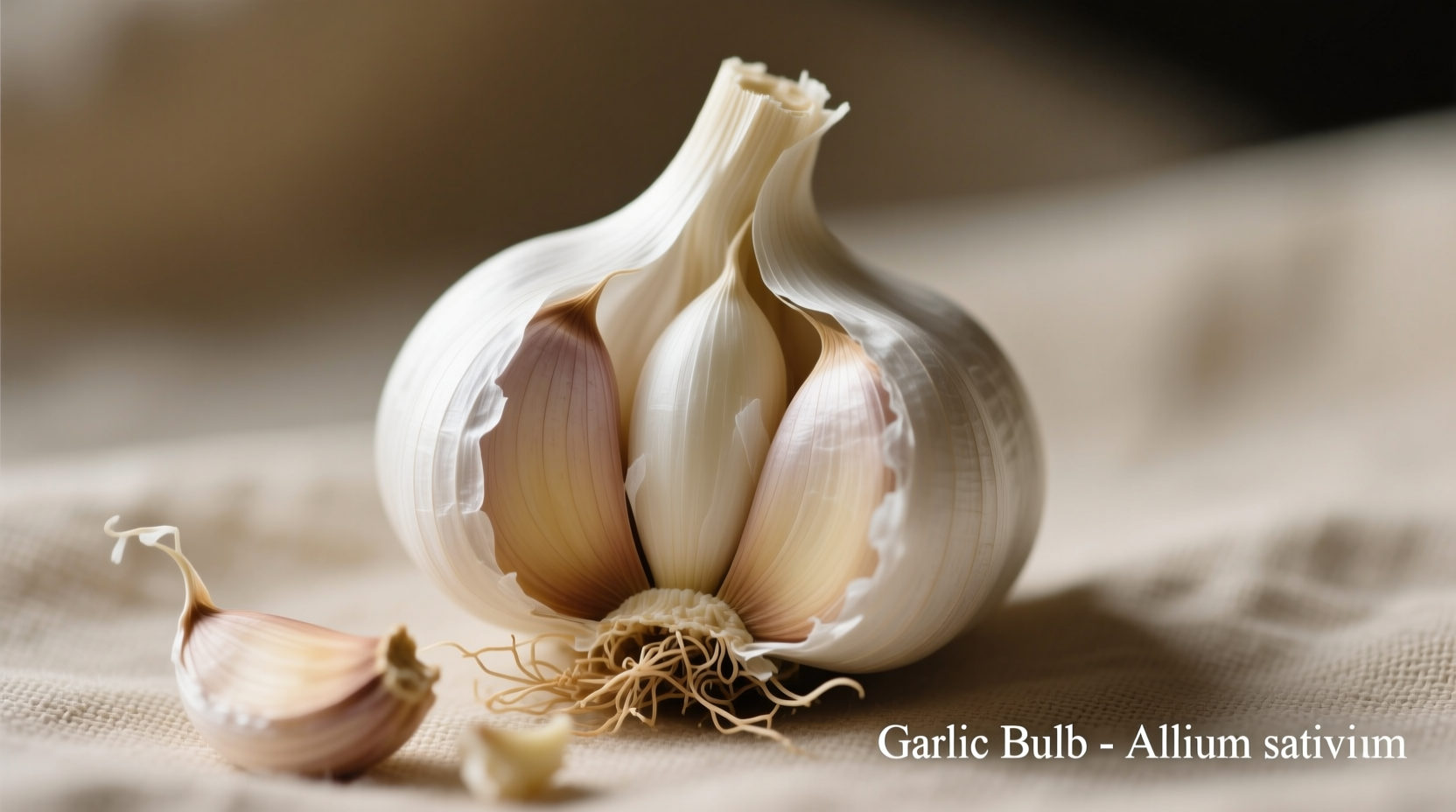Demystifying the Garlic Bulb: Your Complete Culinary Reference
When recipes call for "one bulb of garlic," many home cooks feel uncertain about what exactly they're working with. This confusion can lead to cooking mistakes—using too much or too little garlic in your dishes. Let's clarify this essential kitchen ingredient once and for all.
What Exactly Constitutes a Garlic Bulb?
A garlic bulb represents the entire head of garlic you purchase at the store. It's the round, multi-lobed structure covered in white or purple-tinged papery skin. Inside this protective outer layer, you'll find individual segments called cloves—typically between 10-12 in a standard supermarket bulb, though some varieties can contain up to 20.
According to the USDA National Nutrient Database, a single medium garlic bulb (about 58g) contains approximately 48 calories, 2.1g of protein, and significant amounts of manganese, vitamin B6, and selenium. The distinctive sulfur compounds responsible for garlic's pungent aroma and health benefits are concentrated throughout the bulb structure.
| Component | Description | Function |
|---|---|---|
| Outer Skin | Papery, white or purple layers | Protects cloves from moisture loss and damage |
| Cloves | Individual segments (10-12 per bulb) | Edible portion containing flavor compounds |
| Root Plate | Flat, hardened base | Anchors bulb in soil during growth |
| Central Stem | Woody core running through center | Structural support for cloves |
Why the Bulb vs. Clove Distinction Matters in Cooking
Understanding garlic's structure directly impacts your cooking results. Professional chefs at the Culinary Institute of America emphasize that recipes specifying "one bulb" versus "one clove" create dramatically different flavor profiles. A whole bulb roasted slowly develops sweet, mellow notes perfect for spreads, while a single minced clove provides the sharp punch needed for stir-fries.
When following recipes, remember these practical conversions:
- 1 standard garlic bulb = approximately 3-4 teaspoons minced garlic
- 1 medium clove = about 1/2 teaspoon minced
- 1 bulb yields roughly 1.5 tablespoons of garlic paste

Selecting Quality Garlic Bulbs: What to Look For
Not all garlic bulbs deliver equal quality. The University of California Cooperative Extension recommends examining bulbs for these characteristics:
- Firmness: Squeeze gently—bulbs should feel solid with no soft spots
- Intact skin: Outer layers should be dry and papery, not moist or moldy
- No sprouting: Avoid bulbs with green shoots emerging from cloves
- Heavy for size: Indicates higher moisture content and freshness
Seasonality affects garlic quality too. Freshly harvested "wet" garlic appears in late spring with moist skin and milder flavor, while cured garlic (available year-round) has dry, papery skin and more intense flavor.
Proper Storage Techniques for Maximum Freshness
Improper storage causes garlic to sprout or become rubbery. Cornell University's Food Science Department confirms that garlic bulbs maintain peak quality for 3-5 months when stored in a cool (60-65°F), dark, well-ventilated space. Never refrigerate whole bulbs, as moisture promotes mold growth.
Once you separate cloves from the bulb, their shelf life decreases significantly. Individual cloves last approximately 7-10 days at room temperature. For longer storage, freeze peeled cloves in an airtight container for up to 6 months.
Practical Applications: Making the Most of Your Garlic Bulb
Understanding garlic's structure unlocks creative cooking techniques:
- Whole bulb roasting: Cut the top off a bulb, drizzle with olive oil, and roast at 400°F for 30-40 minutes for sweet, spreadable garlic
- Preserved garlic: Submerge whole bulbs in olive oil with herbs for flavorful infusions (properly refrigerated)
- Garlic confit: Slow-cook separated cloves in oil for versatile culinary applications
- Measurement conversion: When recipes specify "bulb" but you need precise amounts, remember that 1 bulb equals approximately 1.5 tablespoons of minced garlic
Historical records from ancient Egyptian tombs reveal garlic's importance as both food and medicine, with bulbs even used as currency for pyramid workers. This historical context underscores why understanding garlic's basic structure remains relevant for modern cooks.
Troubleshooting Common Garlic Bulb Issues
Encountering problems with your garlic? Here's how to address them:
- Green sprouts in center: Remove the green germ before using—it's bitter but the rest remains edible
- Soft or mushy cloves: Discard the entire bulb—this indicates advanced spoilage
- Purple discoloration: Normal in some varieties; doesn't affect flavor
- Excessive heat: Soaking minced garlic in cold water for 10 minutes reduces pungency











 浙公网安备
33010002000092号
浙公网安备
33010002000092号 浙B2-20120091-4
浙B2-20120091-4